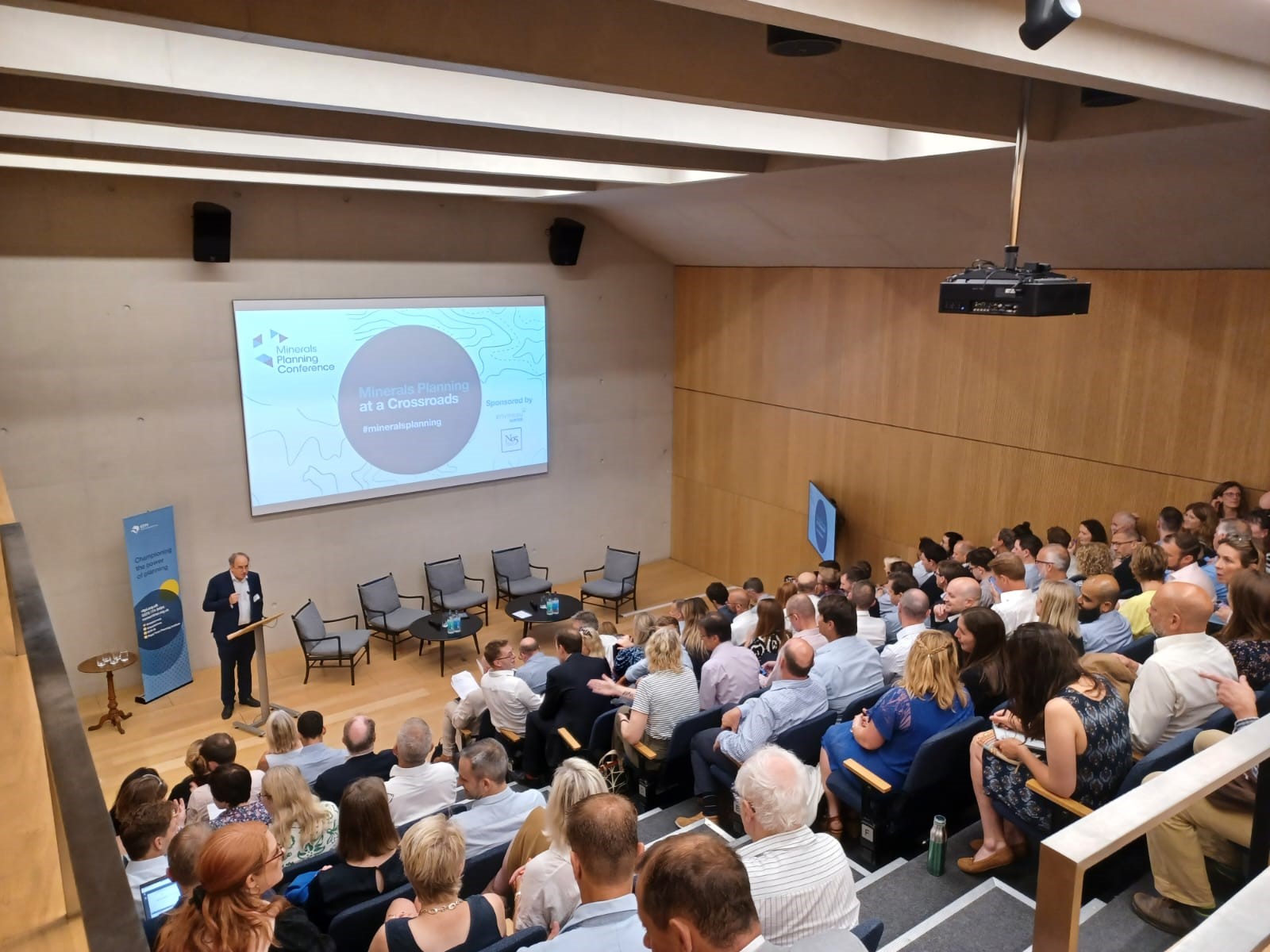
Over 300 delegates, in person and online, attended the 2023 MPA/RTPI conference ‘Minerals Planning at a Crossroads’ on 15th June in London to hear from a range of expert speakers about the challenges facing minerals planning and how these may be met.
Common themes were the essentiality of all minerals for the economy and society, a planning system that enables need to be met sustainably, and the importance of minerals planners, coupled with how to train and attract people into the profession.
Following an introduction by Lindsey Richards, vice president of the RTPI, the keynote address was provided by Dr Karen Hanghøj, director of the British Geological Survey, in which she explained which minerals may be considered ‘critical’ due to the high value and risk to supply in the context of other ‘essential’ minerals and highlighted that what is essential today could become critical tomorrow should supply be disrupted. Given the global development challenges taking place, the case was presented that demand for primary minerals, even with high levels of recycling, would invariably increase to meet societal needs.

Mark Russell, MPA executive director for Planning and Mineral Resources, commented: “Mineral planning is a hugely important and influential function that is often overlooked, but nevertheless plays a crucial role supporting the delivery of Government ambitions around housing and green growth. With 300 delegates attending, this year’s conference reinforced the value and benefit of having a platform for the mineral planning community to come together to hear updates on key developments and share experiences.
“While the issue of minerals supply has been dominated in Government circles by concerns around the availability and delivery of ‘critical’ minerals like lithium, cobalt and nickel, it is important we do not lose sight of the fact that the industry responsible for delivering a steady and adequate supply of ‘essential’ minerals for UK construction and manufacturing face many of the same issues.
“Skills and recruitment remain a challenge across the wider planning profession, and minerals planning is no different. But as a relatively small community, this gives everyone involved a unique opportunity to find smarter ways of working to deliver the outcomes required.”
In the Environment and Heritage part of the conference, speakers covered the challenges and ways of addressing climate change and biodiversity net gain in minerals planning and development, the importance of securing environmental permits for water abstraction as part of the ‘licence to operate’, and advanced techniques for surveying archaeology providing more accurate and faster results at lower financial and carbon cost.

This included using drones for hi-resolution imagery and ground geochemistry and geophysical technology to identify human activity in soils. Several speakers highlighted the risks associated with placing process over outcomes, and the importance of effective engagement between planners, regulators, industry and their consultants was reinforced, alongside the need for pragmatism and balance.
The Planning Reform section heard from the Department of Levelling Up, Housing and Communities on the progress of the Levelling Up & Regeneration Bill and the various associated changes, including a review of the National Planning Policy Framework, with National Development Management Policies and proposals for Environmental Outcome Reports to replace the existing EIA regime in England. The current status of the Managed Aggregates Supply System was reviewed, including the intention to produce new Guidelines for aggregates provision to be informed by a new GB- scale Aggregate Minerals survey to be undertaken in early 2024.
The pros and cons of the potential use of the Development Consent Orders for minerals development proposals instead of planning applications were also discussed.
The Legal Update was provided by No5 Chambers, which considered recent case law and appeal decisions to illustrate the complexity of meeting the requirements of policies such as green belt for minerals development. The session also highlighted the challenges likely to be faced with the proposed Environmental Outcome Reporting (EORs) system and the continued development of climate change policies in national and local planning policies.
The final session Planning Practice and Implementation, heard from minerals planning authorities on the difficulties in recruiting and retaining minerals planners in the public sector and how this might be addressed, including providing minerals modules in planning degrees, identifying better career paths and ways of working. This included collaboration and shared services across authorities – a model already in place in North Wales that delivered a more effective, efficient and resilient service, including attracting and retaining professional staff to work in a wider strategic team.








